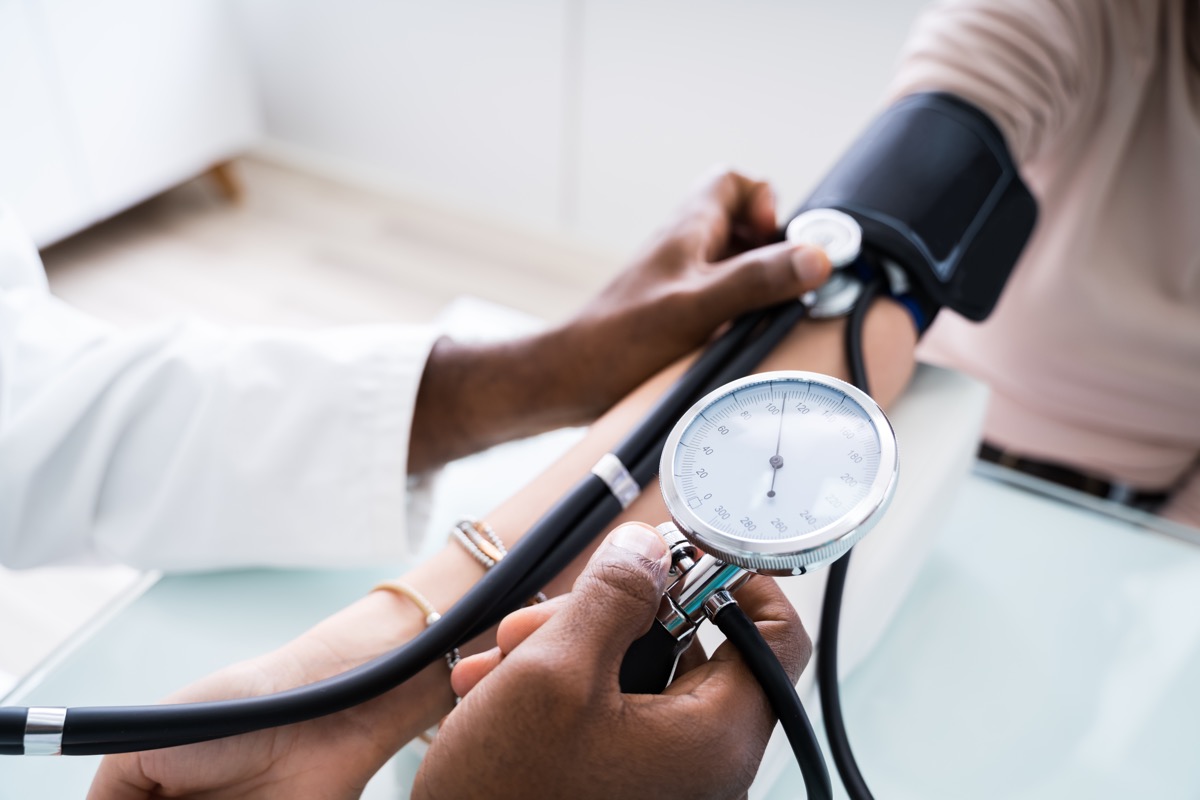This content references scientific studies and academic research, and is fact-checked to ensure accuracy.
Our team of licensed nutritionists and dietitians strives to be objective, unbiased, and honest.
We are committed to bringing you researched, expert-driven content to help you make more informed decisions around food, health, and wellness. We know how important making choices about your overall health is, and we strive to provide you with the best information possible.
If you struggle with high blood pressure, you’re not alone. According to the Centers for Disease Control and Prevention (CDC), 47.3% of U.S. adults have hypertension, among whom 73.9% have uncontrolled blood pressure. Hypertension is a major risk factor for both heart attack and stroke, which affect approximately 805,000 and 795,000 Americans each year, respectively.
While medication can help keep dangerously high blood pressure at bay for some, further lifestyle interventions are necessary to manage the condition for many others. Fortunately, new research published in the journal Circulation reveals that a relatively simple set of modifications to your daily routine could have a profound effect on individuals with uncontrolled high blood pressure.
Specifically, researchers found that, among a group of 140 adults with uncontrolled high blood pressure, those who adhered to the DASH diet and exercised significantly lowered their blood pressure over the course of a four-month period.
The DASH in DASH diet stands for Dietary Approaches to Stop Hypertension. The fundamentals of the diet are relatively simple: consume more fruits and vegetables, whole grains, low-fat or fat-free dairy products, beans, nuts, fish, poultry, and vegetable oils while limiting your intake of saturated fat and refined sugar. Perhaps most crucially, those who adhere to the diet should consume no more than 2,300 milligrams of sodium—approximately the amount contained in a single teaspoon of salt—per day.
It wasn’t dietary interventions alone that helped study subjects get their blood pressure into healthier territory.
Among the 140 subjects who participated in the study, 90 adhered to a rigorous exercise routine three days a week under the supervision of professionals at a cardiac rehabilitation facility. The remaining 50 study subjects were given written instructions regarding exercise, diet, and weight loss following one session with a health educator.
Study participants who adhered to the DASH diet and the thrice-weekly exercise program reduced their systolic blood pressure by a minimum of 12 points. Those who sat in on the coaching session and were given instructions on diet and exercise to follow at home reduced their systolic blood pressure by just 7 points.
“Our findings showed lifestyle modifications among people with resistant hypertension can help them successfully lose weight and increase their physical activity, and as a result, lower blood pressure and potentially reduce their risk of heart attack or stroke,” said James A. Blumenthal, Ph.D., first and senior author of the study, and J.P. Gibbons Professor of Psychiatry and Behavioral Sciences at Duke University School of Medicine in Durham, North Carolina, in a statement.
“The most important point is that it is not too late to lower blood pressure by making healthy lifestyle choices,” Blumenthal added. “Adopting a healthy lifestyle pays huge dividends, even for people whose blood pressure remains elevated despite being on three or more antihypertensive medications.”
For more ways to get your blood pressure under control, check out the Best Supplements for High Blood Pressure, According to Dietitians, and for the latest healthy eating news delivered to your inbox, sign up for our newsletter!
Read this next:
© 2020 Galvanized Media. All Rights Reserved. EatThis.com is part of the AllRecipes Food Group
